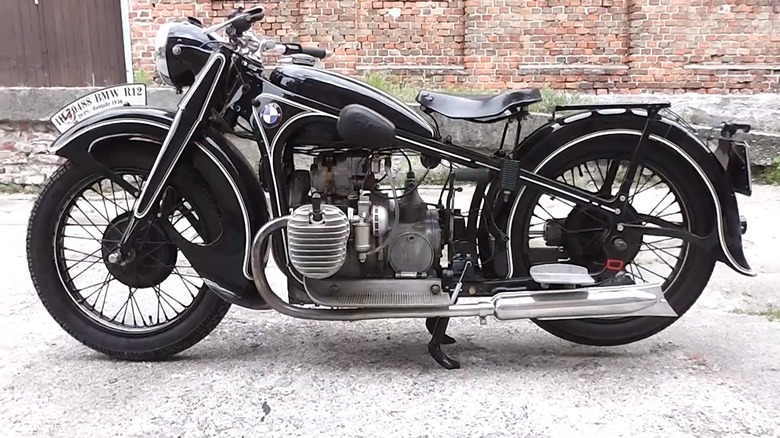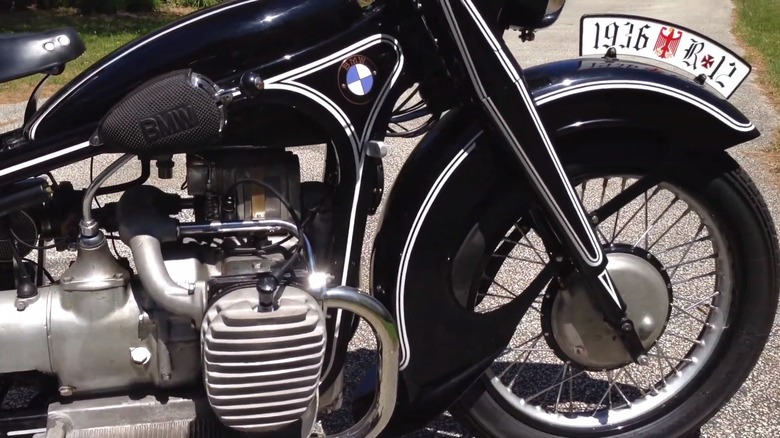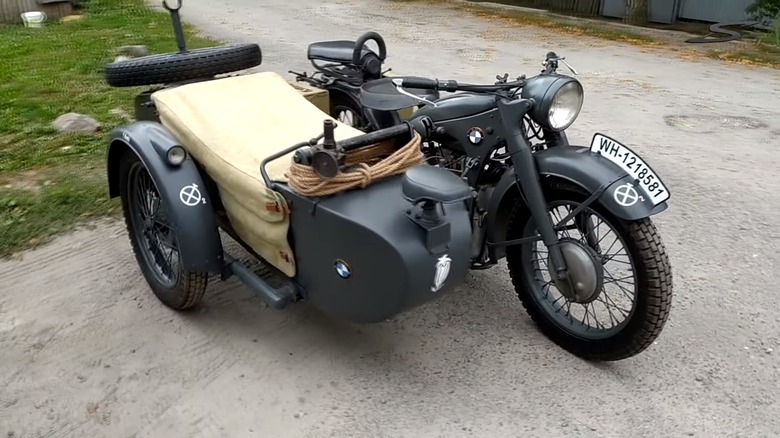All About The 1936 BMW R12 Motorcycle
Bavarian Motor Works or BMW was launched during WWI and initially had nothing to do with automobiles or motorcycles, but instead, made engines for aircraft. However, the German company would soon utilize the knowledge it gained from the aerospace industry in designing its motorcycles. Following the First World War, BMW crafted its debut bike in the early 1920s, and its engine shared something in common with the manufacturer's previous aircraft powerplant: its positioning. BMW designers noted the cooling potential of arranging cylinders on aircraft engines so they could receive better airflow during operation. This concept of air-cooled cylinders translated well into motorcycles and was the start of great things to come, including the best BMW motorcycles ever made.
Around three years before the start of World War II, the 1936 BMW R12 motorcycle debuted and offered some unique and innovative features. The bike could generate 16 horsepower, hit a top speed of 68 mph, and weighed just over 400 pounds. At 745cc, the R12 had more performance capability than any bike BMW had created before. It also included a more robust frame to correct weak points in earlier designs that caused bonds between structures to separate. From 1935 through 1942, approximately 30,000 R12 units were made, according to the National Motorcycle Museum.
The first to use a modern hydraulic front suspension
A motorcycle's suspension is an integral component to not only rider comfort over rugged surfaces but also affects cornering and stability. Over the last century, many manufacturers have tinkered with different front suspension designs to determine the best. BMW was no different, and it struggled to find a solution that would enable them to win racing events in the 1930s over the competition that exhibited superior handling.
When the R12 hit the streets, it featured a telescopic fork with a hydraulic piston system for a smoother, more manageable ride. The telescopic fork design is one of the most commonly seen today, but the first to incorporate it and a hydraulic system was the BMW R12. Unfortunately, BMW engineers gave little, if any, thought to the R12 rear suspension, which was practically non-existent. A few small springs underneath the seat were the only means of reducing road force against the rider.
The R12 was used by infantry during WWII
Engaged in combat across many countries simultaneously during the Second World War, German forces needed a quick method to transport information, injured service personnel, and light cargo. The BMW R12 was an ideal vehicle for several scenarios that required swift movement across the battlefield. Germany's armed forces also attached a sidecar to the R12 for even more potential uses, including combat capability.
With the sidecar equipped, German soldiers could attach a machine gun to the R12 or utilize rifles, submachine guns, pistols, or explosives to strike targets while on the move. The R12 was also handy for getting messages back and forth to different units when radio communication wasn't an option.
Due to its robust performance, the BMW R12 excelled at swiftly infiltrating enemy territory and gaining valuable information about opposing forces. German soldiers could move in and out of hostile areas more quickly with the R12 than any other ground vehicle. The BMW R12 completed missions on battlelines across Europe and North Africa until its replacement in 1942. While the R12 was fast for its time, the German manufacturer continued to innovate over the years, eventually crafting far faster BMW motorcycles.


